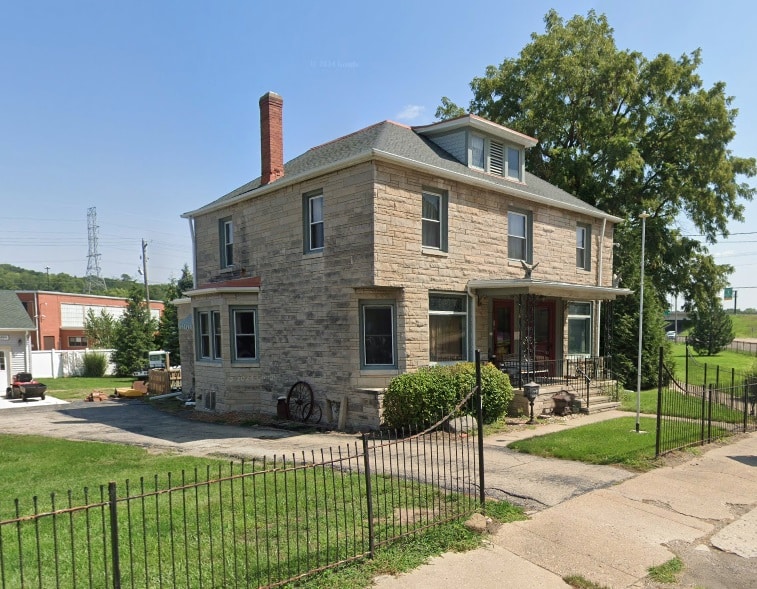Here’s a chance to read again one of our old Local History Room columns, first published in March 2014 before the launch of this blog . . .
On several occasions, this column has taken a look at the early history of white European settlement of the Illinois River Valley in our area, outlining the stories of the first French explorers and the interaction of white settlers with the native peoples of the region.
One of the books in the Pekin Public Library’s Local History Room, entitled “The Centennial History of East Peoria,” edited by Daniel LaKemper and published in 1984, commences its story in the same way, telling of the explorers Marquette and Joliet, La Salle and Tonti, and the construction of the ephemeral Fort Crevecoeur early in 1680. That is the inevitable starting point for any history of a community in our area, but it’s especially fitting in the case of a history of East Peoria, since some investigators have made a compelling case that Fort Crevecoeur was probably located at a spot now within the city limits of East Peoria.
That era, however, is not specifically a period of East Peoria’s history, which strictly speaking did not begin until the 1880s. From the days of La Salle until then, the intervening two centuries saw the activities of French fur traders, the migrations and warfare of American Indian tribes, clashes between European colonial powers, the founding of the United States, and conflict between white Americans and the native peoples that ended with the wholesale clearance of all Indians from Illinois, opening the territory to unimpeded white settlement.
As this column has previously related, the first trickle of white American settlement in what was to become Tazewell County started with the arrival of William Blanchard and Nathan Dillon. Within a few years the trickle became a flood, and communities and farmsteads were planted throughout the county. Blanchard is a significant figure not only in the county’s history but in the history of East Peoria, since he was apparently the county’s first white settler and first made his residence in what would become Fondulac Township. Blanchard’s marriage to Elizabeth Donohue in 1825 was the first marriage in the township. A few years later, in 1831, the family of David Schertz arrived from Alsace-Lorraine and settled on a farmstead of 160 acres along Farm Creek. Schertz’s cabin was located around the spot where Central Junior High School was later built.
Fast forward another two decades or so, and we find a new town being platted in the area that had been settled by Blanchard – this was the town of “Fondulac” (named for Fondulac Township), platted on June 14, 1855. The plat of Fondulac “showed three streets – Mill Street, Main Street, and Depot Avenue – along with a saw mill, a cording mill, and part of the Peoria & Oquawka Railroad. It is assumed that this Main Street is the current Main Street – the area covered running from the four corners north to Farm Creek,” says “The Centennial History of East Peoria,” page 7.
About nine years after the platting of Fondulac, another town, called “Bluetown” was surveyed and platted during the winter and spring of 1864 in the area settled by the Schertz family, around East Washington Street. The Centennial History (page 7) says, “At least three explanations as to the origin of the name ‘Bluetown’ have been advanced. Following the custom in their homeland of Alsace, many of the early settlers wore blue smocks. Also, because the land was marshy and prone to floods many of the houses were built high, some on stilts, and supposedly painted blue to combat corrosion. The other suggestion was that many of the houses belonged to a mining company that bought a quantity of blue paid (sic) and painted the workers homes with that color. According to Irene (Schertz) Herbst, David Schertz’s great-granddaughter, ‘It was definitely not named for any buildings painted blue.’ It was named by Joseph Schertz and those early Alsatians, who ‘always wore blue smocks at their work.’”
In addition to Fondulac and Bluetown, another little community in the area briefly existed during this period – “Coleville,” a settlement located between Fondulac and Bluetown. It grew up around the mansion of the Riverboat Captain Almiron S. Cole, which formerly existed where First United Methodist Church was later built, at the corner of Washington and Almiron streets. Cole and his family had arrived in the future East Peoria in 1835.
The towns of Fondulac and Bluetown were the parents, so to speak, of East Peoria. As the Centennial History says on page 9, two decades after the platting of Bluetown, the citizens of Bluetown and Fondulac on July 1, 1884, decided to incorporate their towns as a single new community – the Village of Hilton. The proposition to incorporate passed by a vote of 30-12. The village’s name presumably was chosen due to the presence of the Hilton Coal & Iron Mining Co., which was located at the east end of town. The following month, on Aug. 4, the village elected its first board of trustees, which was headed by Nicholas as village board president.
Hilton was to exist for only five years, however, for in October of 1889, the village changed its name to East Peoria.











